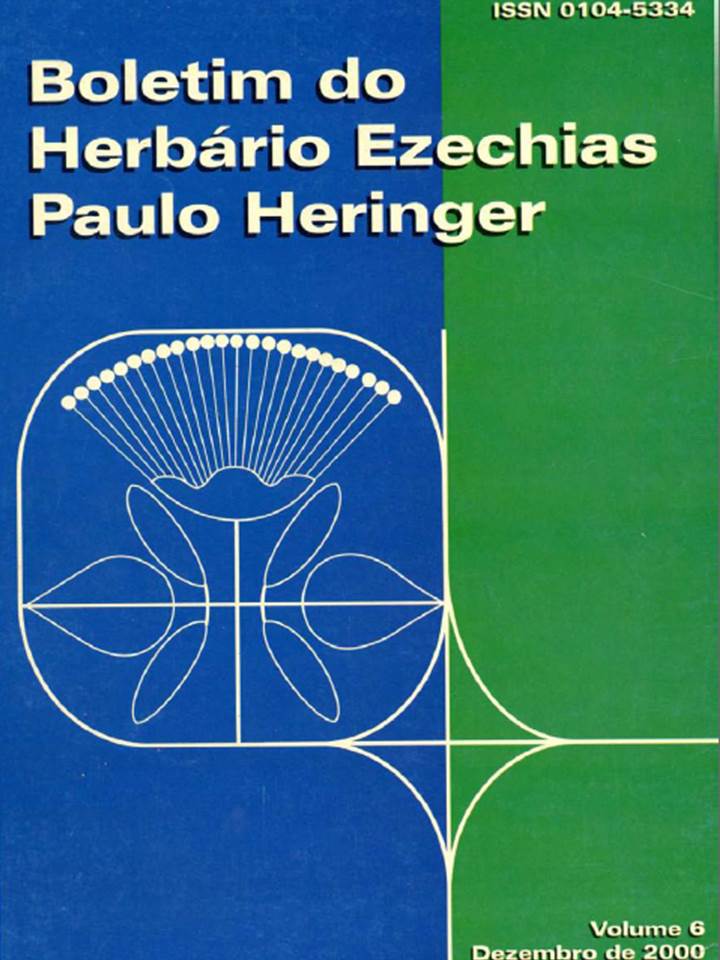FLORÍSTICA E ESTRUTURA DA VEGETAÇÃO ARBÓREA DE UM FRAGMENTO DE FLORESTA CILIAR DO ALTO SÃO FRANCISCO MARTINHO CAMPOS MINAS GERAIS
Abstract
Realizou-se o levantamento florístico e fitossociológico da vegetação arbórea de um fragmento de floresta ciliar, localizado na Fazenda Bocaina, em Martinho Campos, MG, situada s margens do rio Picão (afluente do rio Pará próximo sua junção com o rio São Francisco) (19í°17'10" S, 45í°08'30" W, altitude 525 a 540 m). Todos os indivíduos com diâmetro do caule altura do solo 5,0 cm (exceto lianas) encontrados em 40 parcelas de 15 x 15 m (0,90 ha) foram identificados, medidos e tiveram sua altura estimada. Para cada espécie, foram calculados os seguintes parâmetros: densidade por área, freqí¼ência absoluta, dominância absoluta e indice de valor de importância (IVI). Também foram calculados o índice de diversidade de Shannon e a equabilidade correspondente, as distâncias euclidianas quadradas e os indices de similaridade de Jaccard entre esta floresta e outras do alto e médio rio Grande e do baixo rio Paranaíba. Foram amostrados 1512 indivíduos. Identificaramse 121 espécies pertencentes a 43 famílias e 89 gêneros. Destacam-se pelo IVI as famílias Meliaceae, Fabaceae e Myrtaceae e as espécies Eugenia florida, Trichilia catigua e Trichilia claussenii. Comparada com algumas florestas ciliares do Estado verifica-se que na floresta de Martinho Campos o número de espécies encontrado não é tão elevado quanto nas outras (exceto na floresta decidua do baixo Paranaíba, que é muito pobre em espécies) e que a maior similaridade florística desta é com a floresta de Conquista, no médio rio Grande. Diferenças macroclimáticas e de solo parecem contribuir para as diferenças florísticas e estruturais encontradas entre as florestas comparadas.
Palavras-chave: florística, estrutura, floresta ciliar, alto São Francisco, Minas Gerais.
ABSTRACT- (Floristic composition and phytosociological structure of the woody plant community of a riparian forest of the upper São Francisco river, in Martinho Campos, Minas Gerais State, Brazil). A floristic and phytosociological survey of the woody plant community was carried out in a fragment of riparian forest situated at the Bocaina Ranch, municipality of Martinho Campos, Minas Gerais state, south-eastern Brazil (19í°17'10"S,45í°08'30" W , altitudes between 525 and 540 m). The forest fragment lies on the margins of the Picão stream, a tributary of Pará river close to its discharge into the São Francisco river. All individual trees with diameter at the base of the stem (dbs) 5,0 cm found in 40 quadrats with 15 x 15 m were identified and had their dbs measured and total height estimated. The following fitosociological parameters were calculated for all species: density per area, absolute frequency, absolute dominance calculated from the basal area, and importance value index (IVI). The Shannon diversity index and the corresponding evenness were calculated. Jaccard's similarity indices and euclidian distances were also calculated among the studied forest and other forest surveyed in the following regions of Minas Gerais: Upper Mid Rio Grande and Lower Rio Paranaíba. A total of 1,512 individuals were recorded in the sample area. These belonged to 43 families, 89 genera and 121 species. The families and species with the highest IVI values were, respectively, Meliaceae, Fabaceae and Myrtaceae, and Eugenia florida, Trichilia catigua and Trichilia claussenii. A comparison with the others areas indicated that in the forest of Martinho Campos the number of species founded is not as high as those others (excepting the deciduous dry forest of the Lower Rio Paranaíba) and that its largest similarity is with the forest of the Mid Rio Grande. Differences in climate and soils apparently contribute to the floristic differences found among the forest areas compared.
Key words:floristic composition, phytosociological structure, riparian forest,upper São Francisco river, Brazil.


